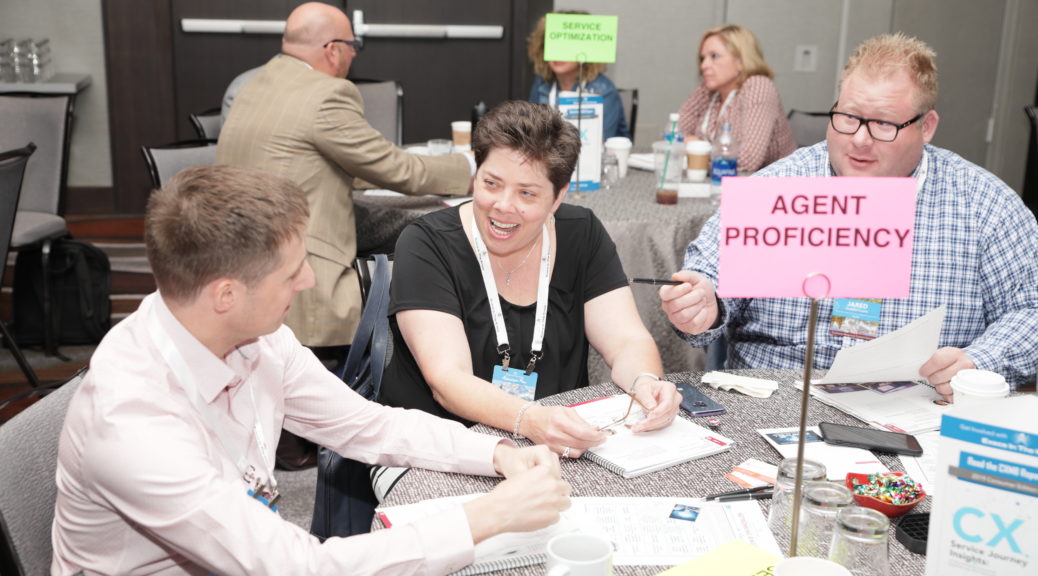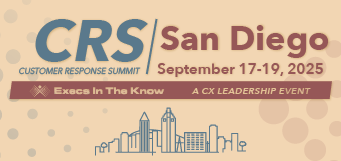During our recent Customer Response Summit, we held a session called Customer Engagement LIVE!
Coveo was honored to join the Execs in the Know community at CRS Denver. As we spent time with fellow customer service and support leaders, we noticed some common themes in conversations, as well as during our panel with Ron Runyon, VP of Service Delivery – Americas at F5 Networks, Kal Kuchimanchi, Director Global Strategy & Central Operations – Customer Support at Uber and James Gallagher, VP of Customer Care and Fraud at Nordstrom.
1. Getting a Handle on Data is a High Priority
From data gaps to management to integration, one of the biggest obstacles we heard over and over to implementing a service transformation is data. As customers expect their experiences throughout the customer life cycle – whether with an agent or on a self-service community – to become more tailored, ensuring that the data carries through each channel seamlessly is paramount. But many leaders are still struggling.
2. AI is Exciting, But We’re Not Sure of the Yield Yet
From chatbots to voice assistants, AI and machine learning are ushering in a new era of customer support, and we need to see ROI. We heard the message loud and clear: the time to implement a strategic AI-powered solution to solve critical issues around CSAT and NPS is now.
3. We Need to Make Friends With Our IT Counterparts
Across the board, we heard that customer support leadership needs a partner for the dance, and that partner is the CIO organization. The IT organization needs to become a strategic and innovative partner for initiatives throughout the customer lifecycle.
4. Do We Know Enough About Our Customers?
Research has shown that customers expect personalization as a standard of service, but we’re still struggling to align our initiatives to the buyer and customer journey. What do they need across channels? How can data drive their experience in real time? Support leaders want answers to these questions.
5. It’s Time to Talk About Change Management?
We’re in a whole new world. With new technologies like machine learning and new expectations of customers, it can often feel like the only constant in the customer support world is change. Having a solid change management strategy and process in place is important now more than ever.
6. Agents Need to be Better Powered and Enabled
As we learn more about our customers, those insights need to be in the hands of the person who needs it most: the agents. Customers expect agents to know their history across channels, and their agents can be left in the dark with a frustrated customer without that information.
7. Show Us the Money
Money and resources are a constant roadblock, even as more and more C-suite leaders understand the critical role that customer success and support play in meeting overall business objectives. Don’t get “shiny object syndrome” when evaluating new options to increase CSAT and NPS, but focus technology investments on strategic initiatives overall.
8. The Issue of Scalability is Becoming More and More Important
This is an area where a technology initiative can help, such as using machine learning to power the experience customers have on your self-service community. As the customer base grows and customers’ expectations rise, support leaders need to plan for scaling their business.
9. We Have Too Many Channels and Too Much Content to Not Invest in Integration
Self-help content. Product sites. Chatbots. Corporate sites. The list can go on and on of the separate multiple channels, but for our customers, it’s one continuous, unified digital journey. It’s time to start treating our content strategy and customer digital experience that way.
10. It’s an Exciting Time to be a Customer Service and Support Leader
Customer support and experience is a rapidly growing field with ramifications into every other area of the business. There are days when it’s hard, but there are days when we know how much our work makes a difference for the people who matter most to us: our customers and employees.
One of the highlights of our panel was Ron Runyon sharing his story of “adaptive transformation” with F5 Networks. As the organization “disrupts itself in every area,” Ron’s team has skillfully and agilely implemented truly transformative initiatives throughout their customer lifecycle, including their implementation of Coveo. You can hear more about their service transformation by watching this video.
One of the first steps to beginning your service transformation is a self-service journey map. You can get started with developing yours with our free how-to guide and checklist. Download it here.
Guest post written by: Audrey Parent, Marketing Specialist at Coveo



